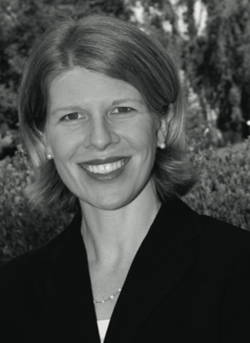“Run-of-the-Mill Justice” An Examination of High-Volume Personal Injury Law Practices
Over the past three decades, no development in the legal services industry has been more widely observed and less carefully scrutinized than the emergence of firms I call “settlement mills”—high-volume personal injury law practices that aggressively advertise and mass produce the resolution of claims, typically with little client interaction and without initiating lawsuits, much less taking claims to trial. Settlement mills process tens of thousands of claims each year. Their ads are fixtures on late-night television and big-city billboards. But their operations have been largely ignored by the academic literature, leaving a sizable gap in what is known about the delivery of contemporary legal services in the United States.

Lawyer advertising is settlement mills’ lifeblood. Thus, it is no exaggeration to say that settlement mills owe their existence to the United States Supreme Court’s ruling in Bates v. State Bar of Arizona just over thirty years ago. In that opinion, the Court wrote, “The only services that lend themselves to advertising are the routine ones: the uncontested divorce, the simple adoption, the uncontested personal bankruptcy, [and] the change of name ….” With that observation, the Supreme Court reassured itself and the legal community that advertising would not be employed by those engaged in the traditional, individualized, adversarial practice of law.
In a way, the Court was right. What the Court and influential commentators wholly underestimated, however, was the force of advertising’s gravitational pull. Because advertising is indeed ill-suited to “individualized” law practice, some entrepreneurial personal injury lawyers, rather than forgoing advertising’s benefit, have turned what was once a prototypical individualized service into a routine or “standardizable” one, characterized by high volumes and cookie-cutter assembly-line procedures. Put simply: Because advertising provides little benefit to conventional personal injury practices, some personal injury practices have become unconventional. Tracing their lineage back to the landmark Bates decision, settlement mills stand as a monument to the law of unintended consequences.
It is peculiar that settlement mills—some of which by virtue of their relentless advertising are household names—have for so long flown under the academic radar. Yet, many factors—practical, demographic, psychological, and legal—have shielded settlement mills from careful scrutiny, allowing them to flourish and process each year tens of thousands of personal injury claims. Researchers have from time to time noted the existence of a cadre of high-volume, low-value, business-oriented contingent fee lawyers that advertise aggressively and eschew litigation. But this article represents the first careful study of settlement mills—a distinct segment of the legal services industry responsible for the delivery of legal services to a significant, albeit disadvantaged, portion of the population.
Drawing on voluminous documents extracted from federal court and state bar disciplinary files, as well as dozens of interviews with current and past settlement mill employees, we have seen that settlement mills have proliferated across the United States. Although rigorous empirical studies are needed to gauge the precise impact settlement mills are having on the American judicial system, RAND’S assessment of why, from 1975 to 1985, there was a significant decline in automobile-related case filings bears repeating. “[I]t appears,” RAND found, “they are being settled elsewhere, in forums that produce stable, predictable outcomes.” The evidence adduced here suggests that the “forums” are America’s settlement mills.
Settlement mills differ from conventional personal injury law firms in many obvious respects: They have higher claim volumes, advertise more aggressively, tout a different fee structure, settle claims more quickly and with less effort, file fewer lawsuits, and delegate more duties to para-professionals. We have seen, in fact, that they even settle claims in a different way, implicitly challenging conventional accounts of claims resolution behavior. Rather than negotiating in the shadow of trial, as prevailing accounts of bargaining behavior presume, settlement mills bargain in the shadow of past settlements. A current South Carolina settlement mill attorney perhaps said it best. When I asked him, “How are cases valued for settlement?” He answered, “What I’ve settled ’em for before.” Shorn of a realistic likelihood of litigation, settlement mill claims are simply and systematically settled for formulaic going rates worked out over time by repeat players (the settlement mill negotiator and insurance claims adjuster), relatively independent of the merit-based assessments and individualized considerations that would loom large if the cases were headed to trial. Much like workers’ compensation tables, these going rates are predictable, generally applicable, and tied less to fault than to the gravity of the injury the claimant has sustained.
In the world of settlement mill dispute resolution, the much-maligned adversarial all-or-nothing fault system yields to an almost cooperative scheme of near universal (though sometimes partial) compensation. In this system, going rates are clustered within established parameters. Some claims are consequently settled for more than they are objectively worth and some for less. For many clients, and particularly those with minor injuries or a dubious legal entitlement to relief, this new system seems to function well. Settlement mills eliminate potentially time-consuming and frustrating legal entanglements, while providing in return prompt, relatively certain, and comparatively generous payouts. Unfortunately, as we have seen, those who have meritorious claims and have been seriously injured are least apt to benefit from this unique brand of legal service, raising profound ethical and public policy issues deserving detailed scrutiny by academics, bar organizations, and the judiciary.
This excerpt is from Nora Freeman Engstrom’s paper, “Run-of-the-Mill Justice,” published in 2009 by Georgetown Journal of Legal Ethics. To read the full paper go here.
